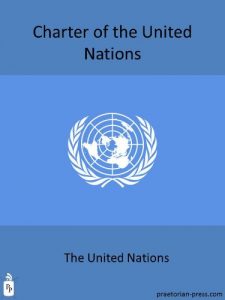The Charter of the United Nations is the foundational treaty of the international organization called the United Nations. It was signed at the San Francisco War Memorial and Performing Arts Center in San Francisco, United States, on June 26, 1945, by 50 of the 51 original member countries (Poland, the other original member, which was not represented at the conference, signed it later). It entered into force on October 24, 1945, after being ratified by the five permanent members of the Security Council—the Republic of China (later replaced by the People's Republic of China), France, the Union of Soviet Socialist Republics (later replaced by the Russian Federation), the United Kingdom, and the United States—and a majority of the other signatories.Today 192 countries are the members of the United Nations.
As a charter, it is a constituent treaty, and all members are bound by its articles. Furthermore, the Charter states that obligations to the United Nations prevail over all other treaty obligations.[1 Most countries in the world have now ratified the Charter. One notable exception is the Holy See, which has chosen to remain a permanent observer state and therefore is not a full signatory to the Charter.
This version is formatted for Kindle with an active Table of Contents and hyperlinks throughout the text.
As a charter, it is a constituent treaty, and all members are bound by its articles. Furthermore, the Charter states that obligations to the United Nations prevail over all other treaty obligations.[1 Most countries in the world have now ratified the Charter. One notable exception is the Holy See, which has chosen to remain a permanent observer state and therefore is not a full signatory to the Charter.
This version is formatted for Kindle with an active Table of Contents and hyperlinks throughout the text.



